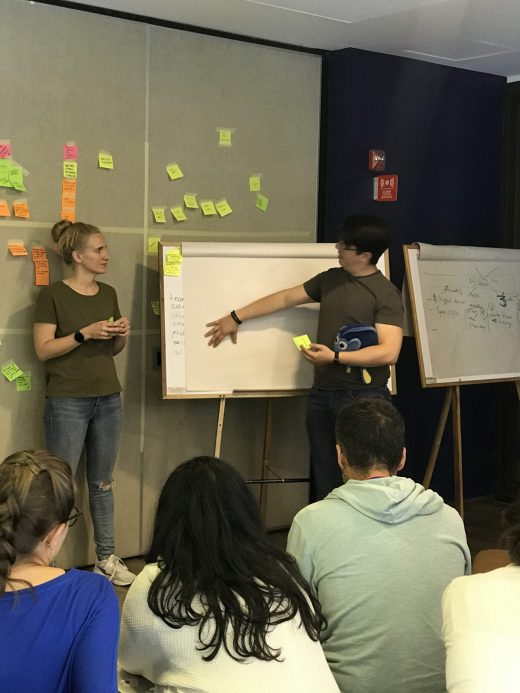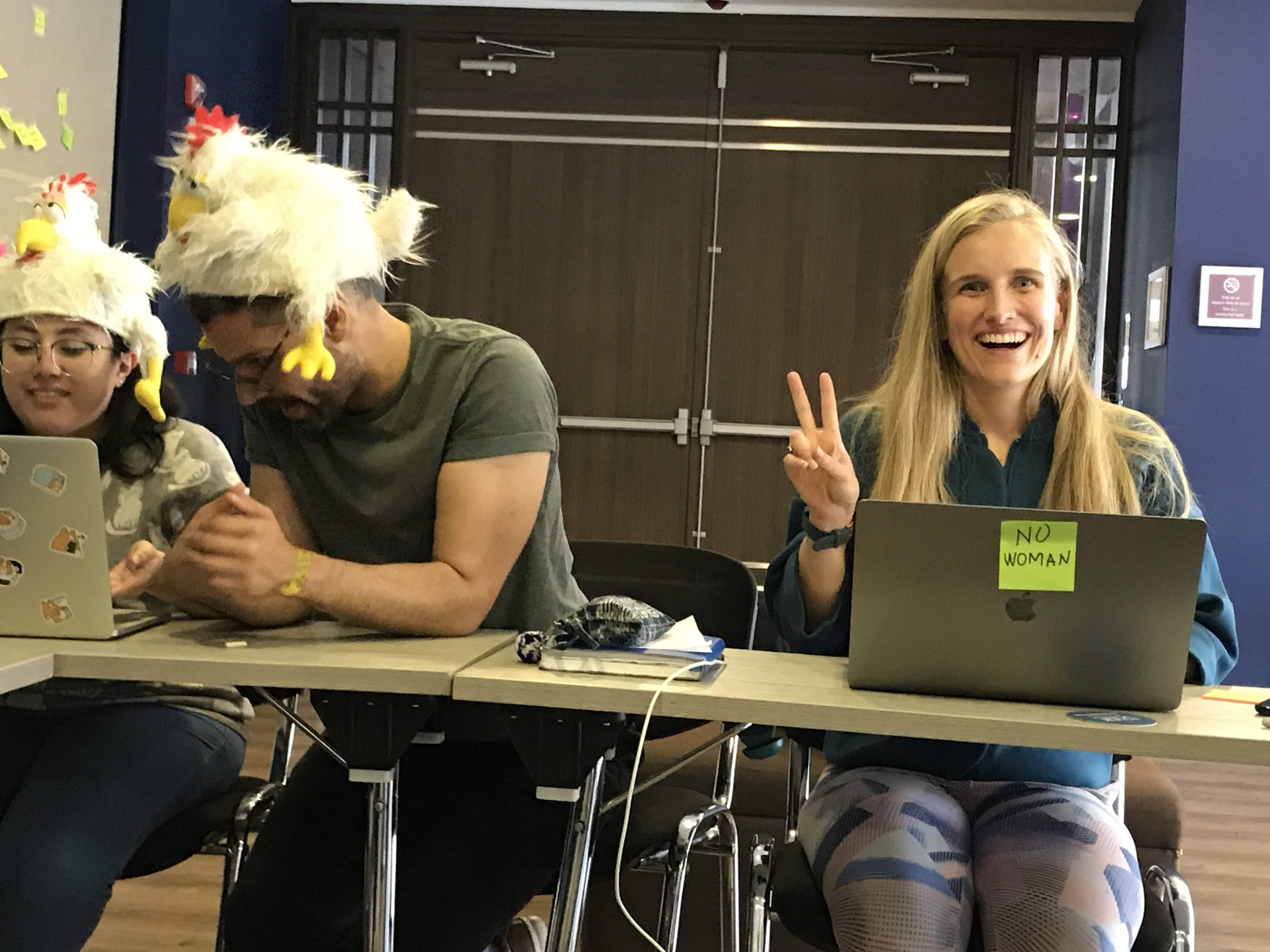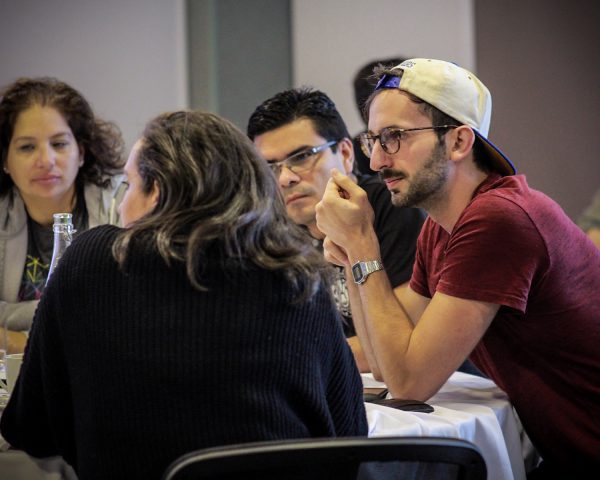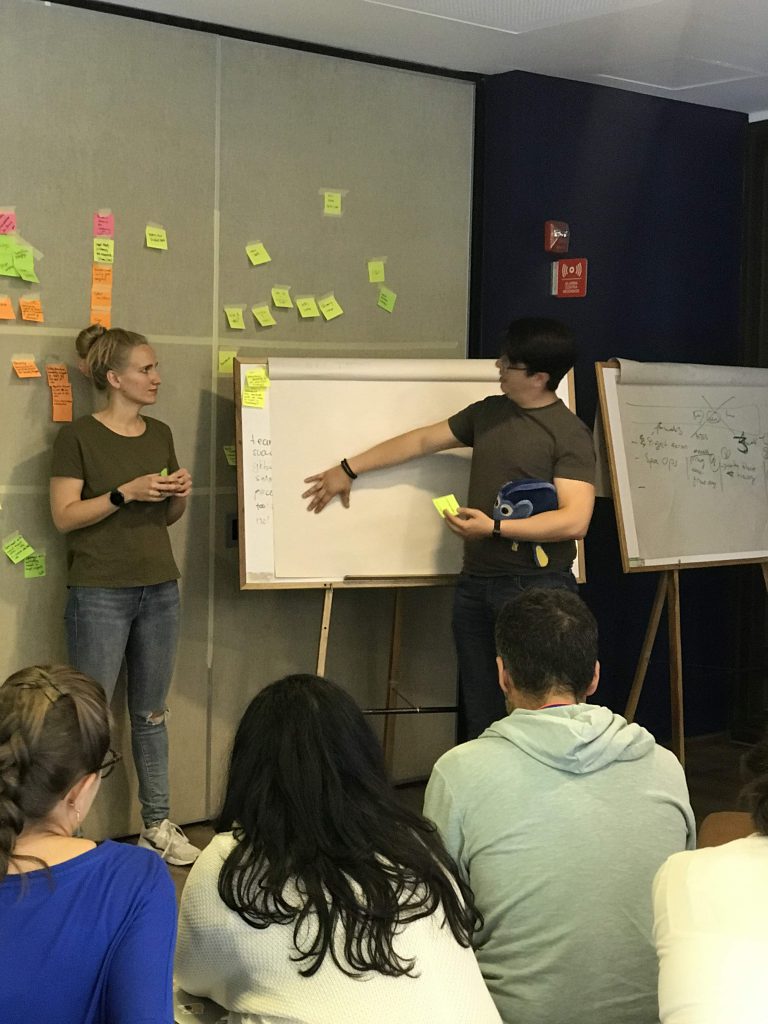You won’t work at the same place until you retire and that can be a good thing. Here’s how.
At Bunny Studio, we’re shaping the future of creative outsourcing industry. It’s been a bumpy ride and we’ve learned some things along the way through trial and error. Learn from our mistakes and successes with our “A Toolkit for Everyone” series. This is where we provide resources so you can shape your future, too.

But if you prefer to watch a video instead, click here:
A job won’t last forever.
In years gone past, a job was for life. You joined a company and the beginning of your career and, all being well, would stay with them until you retired with a comfortable pension fund.
This isn’t the case anymore. A job for life is rare these days, with most people jumping between positions and employers every few years. Employees are encouraged to think of themselves as free agents — as people who seek out the best opportunities for growth and then change jobs whenever better offers beckon.
There are positive aspects to this change in working culture. Greater turnover can increase a company’s agility, for example. The best talent is also unlikely to stay in a lifetime contract, preferring the challenge of different short-term projects.
That being said, stability is important. An employee who feels stable will fully invest their time and energy into their role, leading to greater stability for the employer. This brings us to our main question.
In this time of quick turnover, how can employers foster stability for their employees and for themselves?
It’s a tough question, but Bunny Studio has found a solution that works for us.
A job won’t last forever. And that’s okay.
First things, first. Employers need to acknowledge that their employees will likely leave their company at some point. This is not a weakness and, importantly, it should not deter employers from investing in their employees. Instead, it should fuel it.
Employers should encourage open discussion about an employee’s future career. What skills does the employee want to gain in order to keep growing personally and professionally? They should also work with them to further their goals, regardless of whether they lead inside or outside the company. This fosters openness and honesty.
Acknowledging that team members might leave is actually the best way to build trust, and thus develop the kind of relationship that convinces great people to stay.

The solution.
Employment is an alliance. It benefits both parties, with the employee’s growth adding to the company’s growth. This alliance is created and managed using the The Alliance Framework. Read their book, by the way. Especially if you’re a leader at your company. It’ll provide you with the background needed to lead this solution successfully.
At the core of this employer-employee alliance is the concept of a tour of duty. This is an ethical commitment between a leader and a team member, both working together towards a specific goal during a specified time frame.
A tour of duty comes in one of three types:
- Rotational tours are short missions for team members who can be onboarded programmatically. They last 2–3 years.
- Transformational tours are mid-term missions that will transform the career of the team member, as well as company. They last 3–5 years.
- Foundational tours are a long-term mission. The company becomes the tool that the team leader uses to fulfill their professional life goals. The team member becomes a leader regarding the company’s mission and core values. This tour is a lifelong commitment.
Different roles will have different tours of duty. The important thing is that a well-integrated tour of duty framework helps everyone involved.
Having a tour of duty ensures trust between employer and employee as neither fears being abandoned by the other party. It also clears expectations between employer and employee as both parties know what they want to achieve together.
What challenges have we faced?
Reading all this, you’d think that we didn’t face any challenges when implementing this framework. On the contrary though — we definitely had a learning curve, too.
So that you can better learn from our experiences, these are the challenges we faced when we first started using this Tour of Duty framework, as well as how we learned from them.
- Difficulties in implementation. The idea of a Tour of Duty can be a confusing one at first. It’s important to underscore that this is not a legally binding document, but an agreement between two parties. It can be a tricky thing to understand and, honestly, we weren’t sure if this sort of thing was going to work at first. It was an experiment. Happily, though, it does work. Last year at Bunny Studio, some of our team members started completing their Tours of Duty. Some team members decided to stay with us, some transitioned out — and everyone was happy with the outcome. The most important thing, though, is that all parties were aware of each other’s movements throughout the Tours of Duty. The framework allowed everyone to plan ahead for the future.
- Keeping the pace. As we’ve discussed, Tours of Duty can be several years long. While two years may not seem like a long time now, time moves fast and before you know it — poof! — a year has gone by and you’ve lost track of where you wanted to be. In order to stay on track, make sure to have at least one checkpoint halfway through. Meet with your leader and discuss your future plans. Has anything changed since the Tour of Duty was first agreed upon? If so, update the document to better reflect your current goals.
- When to start. The best time to implement a Tour of Duty is during the first eight weeks of a new position — whether you’re new to the company or transitioning to a different role. Why? Well, wait any longer than that and it might become a bit awkward. Say you’ve been in your role for a year, it’s all going well, you’re enjoying your position, and so on. Then, one day, your leader brings up a Tour of Duty. “Wait, what?”, you might think, “Why are we talking about this now?”. Even if nothing is the matter, it could be an awkward conversation. So, plan ahead and collaboratively decide on a Tour of Duty from the very beginning.
How does it work?
Setting up a tour of duty framework is relatively straightforward. There are three stages.
Before the tour of duty begins.
Define the agreement. What are the terms of the agreement? How long will it last? Who is involved?
Decide on a mission. Both employer and employee should come up with their own missions. For example, at Bunny Studio our company mission is to shape the future of outsourcing.
Whatever the end goal, all good missions contain similar attributes. Make sure your mission is clear and concise. Also make sure that they align with other missions. For example, personal missions should take into account the team’s and the company’s mission.
Understand mutual expectations. What does each party expect from the other? And from themselves?.
Expectations will vary depending on the role, the company , the projects and the individuals involved. On the whole though, expectations for both employer and employee should be focused on improvement and development. They should be concise, memorable and mutually beneficial.
During the tour of duty.
After the tour of duty agreement has been signed, it’s up to both parties to keep their side of the bargain.
Both parties should meet regularly. This is to keep both sides accountable. Meetings should take place at least once every three months, with both parties updating each other and re-aligning expectations.

Ending the Tour of Duty.
About 6 to 12 months prior to the tour of duty ending, both parties should meet to align future plans. This leads to one of two outcomes.
- The employee and the employer define a new tour of duty within the company. Part of the commitment a team member makes during an initial tour of duty is to seriously consider the employer’s proposal for a second tour of duty.
- The employee and the employer conclude there isn’t going to be a new tour of duty. Potential departures must be discussed openly and honestly from both sides. Employers should help team members assess their options, even if those options include working at other companies.
Regardless, if the conclusion of the tour of duty is mutually amicable, the employee can be invited to join the alumni network. At Bunny Studio, this is network where former and current team members can interact, share resources and grow connections.
As a leader, what do I need to know?
The company, team leaders, and team members agree on a tour of duty on the understanding that all parties will work towards making their expectations a reality.
It is a team leader’s responsibility to look out for the interests of both the company and team members. This means that a leader must provide honest feedback and evaluate individual performance. The leader must also ensure that the company helps the team member achieve their professional goals.
If something isn’t working, it is the leader’s responsibility to define agreements on improvements.
The most important part.
What’s the take away? In this time of quick turnover, how can employers foster stability for their employees and for themselves?
Well, they can be open and honest. A good way to do that is use a tour of duty framework.
Lifetime job contracts may be a thing of the past. That is, in it’s own way, okay. Things change. The most important thing is to keep finding solutions to new challenges.
Need some more guidance? See below for a copy of our Tour of Duty template.
Tour of Duty Template
Preamble
- I, [team leader], am glad to have you, [team member], on my team.
- I view our relationship as a mutual alliance that needs to help both of us.
- This statement of alliance lets us lay out both our expectations so that we can invest in the relationship and each other with confidence.
- I want you to help transform the company.
- In return, I and the company need to help you improve your market value and transform your career, preferably within this organization.
- While I am not making a commitment to offer lifetime work, and you are not making a commitment to stay for your entire career, we will act to maintain a long-term alliance, even if the work relationship ends.
Article 1: Your Tour of Duty
Principles
- Your tour of duty defines what you will do for me and the business; it also defines what the business and I will do for your career.
- While there is no legal obligation on you, me, or the company, and plans can always change, right now we all committed to completing this tour of duty on the basis of mutual trust. This means that if we’re progressing towards our mutual goals, the company won’t fire you, and you won’t leave.
Expectations
- I expect this tour of duty to be rotational / transformational / foundational (please select one) and last approximately the following amount of time: [length of time] ending around [date].
- We, the company, expect this current tour of duty to encompass the time it takes for you to execute the following mission objective: [insert here].
- Here is what the results of a successful tour of duty look like for the company: [insert here; examples could include product launches, process improvements, sales, etc.]
Please use the format “having [goal] by [date]”. For example: “having launched X by Jan 31, 2020”. - Here is what the results of a successful tour of duty look like for you: [insert here; examples include knowledge, skills, accomplishments, recognition, etc.]. Please use the format “having [goal] by [date]”. For example: “Having being invited to speak at an event every quarter by July 31, 2015.”
- As we approach the end of this tour of duty, with approximately six to twelve months to go, you and I should discuss what you would like to do once the tour of duty is complete, either by defining a new tour of duty at the company or discussing your transition to a different company.
Article 2: Alignment
Principles
- You, I, and the company all have core aspirations and values.
- We will all work together to align as many aspirations and values as we can between the three parties involved, while understanding there will not be 100% overlap.
Expectations
- I will lay out my core aspirations and values and what I believe are the company’s specific and rigorous core aspirations and values.
- We welcome your feedback and suggestions on those core aspirations and values.
- I would like to learn about your core aspirations and values, even where they differ from mine or those of the company. They are: [insert here]
- We will work together to set mutual expectations for your career trajectory
- We will recognize you for both your business accomplishments and your ability to exemplify the company’s aspirations and values.
- If gaps exist, we will address them explicitly and proactively, rather than ignoring them and letting them grow and damage our alliance.
Article 3: Network Intelligence
Principles
- Your professional network is a valuable asset, both for you and your career, and for me and the company.
- People, including those outside our company, are a critical source of information and insight for solving business challenges.
- The company and I will give you time to build and groom your network. In exchange, we ask that you use your network to help us achieve your mission objective and make the business successful.
Expectations
- I will be clear about what constitutes non-public, non-secret information that you can share with your network.
- While this shouldn’t need to be explicit, you should feel free to use company equipment (e.g., your computer or smartphone) and company time for professional social networking.
- You may use company facilities to host external groups and events.
Article 4: The Alumni Network
Principles
- “A job for life” is over for most of us. But a valuable working relationship should last a lifetime.
- If/when you leave the company, if you’re in good standing, we will invite you to our corporate alumni network.
- The alliance between the company and you as an alumni will remain consistent with the same principles: mutual trust, mutual investment, mutual benefit.
- As a current member of our team, feel free to tap the alumni network for help on solving current business challenges.
Expectations
- The company and I commit to keeping you in the loop and up to date on what’s happening with the company, including consulting projects or new positions that might interest you.
- When the company or I think there’s a way for you to help us, we ask that you give us a fair hearing, though of course you can decline.
- The company will set up tools (e.g. mailing lists, groups, enterprise social networks) to help you tap the knowledge of our team members and corporate alumni.
Agreed upon the following dates:
Leader
Name: _________________
Date: __________________
Team Member
Name: ___________________
Date: ____________________









